
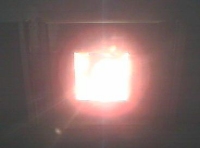
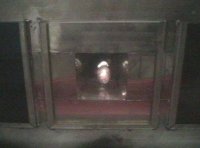
| 1. |  |
2. |  |
3. |  |
| 4. | 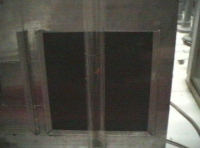 |
5. |  |
6. | 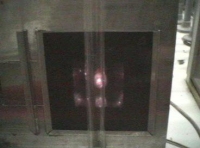 |
| 7. | 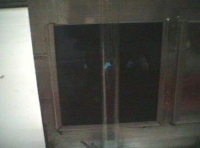 |
8. | 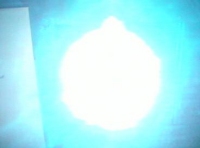 |
9. | 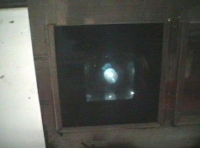 |
| Photo 1: | A test tube filled with a mixture of chlorine and methane is positioned in front of a light bulb (white light). |
| Photo 2: | As soon as the light bulb is turned on, the test tube explodes with a loud bang. |
| Photo 3: | After the flash of light, the test tube has indeed disappeared.
White light causes chlorine molecules to split into chlorine radicals, which in turn combine with methane, creating a strongly exothermic chain reaction. A breakdown of the reaction in detail: a) Elementary chlorine absorbs light. In so doing, part of the chlorine molecule dissociates into a chlorine radical (initiation): Cl2
b) The chlorine radical produced reacts with methane to form methane radicals
and hydrochloric acid (self-propagating chain reaction):
Cl . + CH4
> HCl + CH3.
The methane radicals react in turn with the chlorine molecules in a strongly
exothermic reaction, producing methyl chloride and chlorine radicals:
CH3. + Cl2
> CH3Cl + Cl .
Chemists prefer to depict the process described under b) as a cycle. In
this free-radical chain reaction, a large amount of energy is released
very quickly (explosion), given that the cycle of methyl chloride and hydrochloric
acid formation takes place 5000 times per chlorine molecule split.
CH3. + CH3.
> C2H6
White light is a combination of all wavelengths of visible light. To make it clear what energy the light must have in order to split chlorine molecules, red (low energy) and blue (high energy) light is used in the following photolysis experiments. |
| Photo 4: | The experiment is repeated, this time using a color filter that allows only red light through. |
| Photo 5: | The lamp is turned on. No reaction takes place. |
| Photo 6: | The test tube remains in place. Red light does not contain enough energy to split chlorine molecules. No reaction takes place. |
| Photo 7: | The test tube from the previous experiment is positioned once again in front of a lamp. However, a color filter that only allows blue light through is placed before the lamp. |
| Photo 8: | As soon as the lamp is turned on, the test tube explodes with a loud bang. |
| Photo 9: | Although blue light is only a part of white light, it has sufficient energy to split chlorine molecules, leading to the chain reaction described above. |
| Exercise OC 1.2.1:
Solution |
The Cl-Cl bond has a binding energy of 242 kJ/mol. What is the wavelength of light needed to split the bond? |